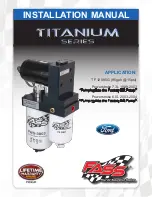
Airbags have been designed to help
protect adults in a moderate to
severe frontal collision. To do this,
the passenger’s airbag is quite large,
and it inflates with tremendous
speed.
As a result, we urge you to follow
these guidelines.
If a larger child must ride in
this car, see page
for important
guidelines on how to decide whether
a child is large enough and mature
enough to ride as a passenger, and
how to properly protect the child.
If the vehicle seat is too
far forward, or the child’s head is
thrown forward during a collision, an
inflating airbag can strike the child
with enough force to kill or very
seriously injure a small child. If a
small child must ride in this car,
follow the instructions on page
.
If the airbag
inflates, it can hit the back of the
child seat with enough force to kill or
very seriously injure an infant.
If you are not wearing a seat
belt in a crash, you could be
thrown forward into the
dashboard and crush the child.
If you are wearing a seat belt, the
child can be torn from your arms
during a crash. For example, if
your car crashes into a parked
vehicle at 30 mph (48 km/h), a
30-lb (14 kg) child will become a
900-lb (410 kg) force, and you will
not be able to hold on.
During a crash, the
belt could press deep into the child
and cause very serious injuries.
29
26
Driver and Passenger Saf ety
Protecting Children
The Passenger’s Airbag Poses
Serious Risks to Children
Small Children
Inf ants
Children who have outgrown child
seats are also at risk of being injured
or killed by an inf lating passenger’s
airbag.
Larger Children
Placing a f orward-f acing child seat in
the f ront seat of a car equipped with
a passenger’s airbag can be
hazardous.
Never put a rear-f acing child seat in
the f ront seat of a car equipped with
a passenger’s airbag.
Never hold a small child on your
lap.
Never put a seat belt over yourself
and a child.
20
01/08/21 20:08:11 31S2A620_023
Main Menu
Table of Contents
▲
▼
















































